Why Your Furnace Is Acting Up
A clanking furnace definitely can cause you to lose sleep, but it is also an indication that extra attention needs to be paid to your HVAC system. Think of those sounds as being symptoms. If you are running a fever, then you know your body is trying to fight an illness off; in a similar way, those strange sounds alert you to the problems within the inner workings of your furnace.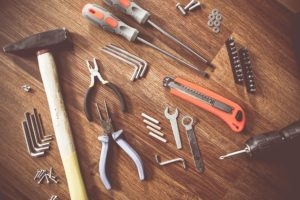
HVAC issues, in particular, are likely to arise in Houston during the fall and winter. If you own a heat pump, it probably isn’t used to having to work in reverse in order to heat your house, which makes it more likely for previously unnoticed problems to arise during the brief heating season here. The same is true for a furnace if you own one.
Fortunately for you, an experienced professional can provide you with a diagnosis of your HVAC system which is based on the noises that your heat pump or furnace is making. The following are the most common sounds that are an indication that your furnace has a problem.
Chirping, Screeching, and Squealing
If you hear a chirping, screeching, or high-pitched squealing sound, most likely the problem relates to the blower motor. That is the part of the furnace that powers the fan that distributes warm air throughout your home. when the blower motor is impaired there is less heat inside your house.
In this situation, there might be one of three issues that could be causing the blower motor to make loud noises.
- No lubricant – Without any lubricant, the blower motor gets subjected to additional friction that is unnecessary. Search for oil ports on the two sides of the blower shaft or blower motor. Then put two to three drops of oil into each of them, if your system does have them. It very important to not use all-purpose oil, but furnace-specific oil instead.
- Loose fan belt – It is on the motor pulley. If the belt has too much slack, the belt will need to be tightened in order to restore the tension. Also, if the belt is too worn it will need to be replaced.
- Motor bearing problems – Bearings make it possible for the motor to deliver the necessary force for powering the furnace and also reduce unwanted friction at the same time. You will have to replace any worn or broken bearing with new ones so that the functionality is restored.
Thumping, Scraping, and Clanking
If they are loud noises and they continue to persist even when the furnace is on, and not only when it is first starting up, there may be several potential things that are causing it.
- Broken or loose blower wheel – The blower motor spins this wheel, and it may move around and get loose, which can produce a loud metallic noise. Over time that may cause more serious damage, so the best thing to do is to tighten it right away. If it gets damaged you will need to replace it.
- Loose motor mount – At times, the motor mount may come loose, which will allow parts along the housing to clang and clatter.
- Unbalanced or rattling parts – Many parts are contained in the entire blower assembly that may come out of alignment. A professional will be able to asses which parts have to be replaced and which ones can be salvaged.
Banging Sound on Startup
If there is a banging noise only when your furnace comes on, then it is probably not a loose mechanical part. It is most likely one of the following problems.
- Delayed ignition – A chain of reactions runs a furnace. Based on the specific temperature chosen by the thermostat, a valve will open and allow natural gas inside of the combustion chamber. Then the igniter or pilot light ignites the burner, and your home is warmed by the heat that comes from the reaction.
At times the ignition doesn’t work immediately, which leads to gas building up. When it ignites finally, it results in a mini-explosion – which is the loud banging sound that you hear – and that can damage the heat exchanger to the point beyond repair eventually. The delay may be caused by improper gas pressure, an ineffective flame on the pilot light, faulty igniter, or dirty burner.
- Funky ductwork – If it doesn’t appear like the bang is coming from the actual furnace, then most likely it is a result of the ductwork expanding and then popping out. Your ducts might be rectangular or too small and may need to be replaced so that the noise issue is alleviated. The fix might also be as simple as getting more vents opened to relieve the pressure or double-check to make sure the air filter does not have any debris inside of it.
Other Sounds
There could be other sounds made by your furnace like clicking, rattling, rumbling, or humming. If only a humming or clicking noise is made by your furnace when it first starts up, then everything is probably functioning okay. However, although it is easy to fix some of those noises, you don’t ever want to place your family and yourself at risk for something that is more serious, such as carbon monoxide poisoning or complete loss of heat. Erring on the side of caution is the best thing to do, and get a professional HVAC technician to make an assessment of the condition of your furnace.
AC Man is a professional HVAC repair company in Houston, TX. We offer both commercial and residential HVAC services. Give us a call today to speak with a professional HVAC repair technician, or check our services.
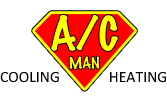
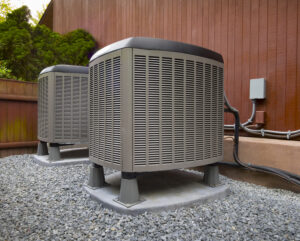 When your heating system has been turned off for a considerable length of time, you may think of turning it up to a high temperature will heat your home quickly. While this will work, this puts to much stress on your heating system which will reduce its efficiency. This will lead to excess energy use since the unit is not running at top efficiency, and your energy bills will go up. It is much better to turn your thermostat up gradually to reduce the stress on the unit.
When your heating system has been turned off for a considerable length of time, you may think of turning it up to a high temperature will heat your home quickly. While this will work, this puts to much stress on your heating system which will reduce its efficiency. This will lead to excess energy use since the unit is not running at top efficiency, and your energy bills will go up. It is much better to turn your thermostat up gradually to reduce the stress on the unit.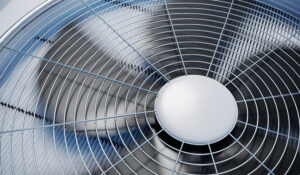 This type of system will be able to deliver green cooling and heating. In fact, this system could do both at the same time. Unlike other traditional systems, the compressor of these units will provide the right amount of cooling required for the conditions of smaller zones. This means that the system runs less frequently and at a lower capacity which is what makes it energy efficient.
This type of system will be able to deliver green cooling and heating. In fact, this system could do both at the same time. Unlike other traditional systems, the compressor of these units will provide the right amount of cooling required for the conditions of smaller zones. This means that the system runs less frequently and at a lower capacity which is what makes it energy efficient.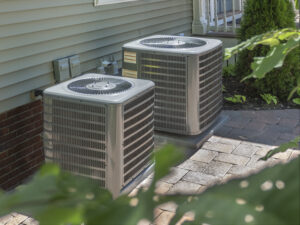 The majority of homes require additional humidification, particularly during the winter months, to help keep a balanced humidity level in the air and avoid any dry air problems. One of the best methods of dealing with humidity issues is by using humidifiers; however, it may not be possible to install a whole-house humidifier. In these cases, a portable humidifier is the next best option as this unit adds moisture directly to the area where you need it most!
The majority of homes require additional humidification, particularly during the winter months, to help keep a balanced humidity level in the air and avoid any dry air problems. One of the best methods of dealing with humidity issues is by using humidifiers; however, it may not be possible to install a whole-house humidifier. In these cases, a portable humidifier is the next best option as this unit adds moisture directly to the area where you need it most!